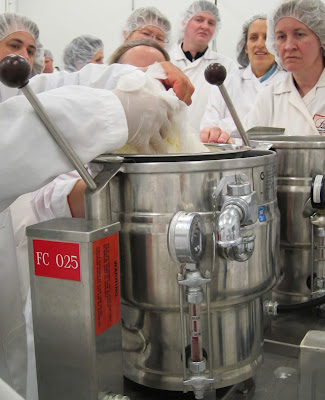Out of Old Saskatchewan Kitchens
History books can be very dry. They list dates and facts, focussing on battles and politicians rather than the everyday lives of people like ourselves. Out of Old Saskatchewan Kitchens by Amy Jo Ehman is the exception.
Short accounts of different time periods and various immigrant groups tell of picnics and harvest meals, hunger and seasonal festivities. The recipes paint a vivid picture of the lives of those who came before us on the Prairies.
Saskatchewan History
Did you know that the fur trade forts had to be completely self-sufficient? They had wheat fields, huge gardens, and their own mills for grinding grain.
I was surprised to learn that there were no Ukrainian settlers to Saskatchewan because there was no independent nation of Ukraine. Perogies is actually a Polish word. Ukrainians refer to them as verenyky. Cabbage rolls were common in many countries, travelling to Saskatchewan with the Croatians who settled at Kenaston and the Hungarians in Esterhazy.
Homesteaders from Syria and Lebanon introduced chickpeas. Saskatchewan is now one of the world’s leading producers of chickpeas.
Saskatchewan Food
Amy Jo gathered her recipes from many different sources. Some of her personal favorites are family recipes, such as her Grandma Ehman’s Applesauce Cookies. Other recipes are drawn from community cookbooks and are often accompanied by a short anecdote.
The recipe for Zwieback or “double buns” comes from the Hutterite Community Cookbook. The buns were cooked on Fridays to be enjoyed on the weekend.
The recipe for Rhubarb Pudding is from Hans and Kristiane Lien, a Norwegian family who moved to the Weldon area after farming in North Dakota. “They came supplied with cattle, farm implements, household goods and some chickens. And a root of “pie plant” for their homestead garden.”
The recipe for Sauerkraut is from the Manitou Pioneer Museum Cookbook and advises that if you are “making a barrel full of sauerkraut, child labour would be useful.”
Hard Times and Hunger
“We tend to have a romantic idealization of pioneer days, but they were horrific” says Amy Jo. “The amount of food they had was barely subsistence. They worked hard to survive.”
The Pinder family were fortunate enough to get their house built before winter arrived. But their potato crop froze and the coyotes ate their cache of frozen rabbits. By March, they were surviving on bannock and a gruel of flour and water.
Supplies were limited. You used what you could grow. But creativity blooms in the face of necessity. Mashed potatoes could be turned into Potato Pie, Lefse or Spudnuts.
Homesteaders took advantage of wild plants serving rose hip syrup, dandelion greens and lamb’s quarters, as well as wild mushrooms.
Nothing went to waste. Sour milk came in handy for scones and griddle cakes.
Snapshots of Another Era
Out of Old Saskatchewan Kitchens has the look and feel of another era. The stories and recipes are interlaced with archival photographs and pages from old recipe books.
Don’t miss the photo of Amy Jo collecting eggs or the early delivery wagons in Saskatoon.
“The whole cookbook was the publisher’s idea,” says Amy Jo. “They phoned me out of the blue and I took some convincing. The look and feel of the book is totally their idea. I think they did a wonderful job.”
Saskatchewan Pride
If you’re proud to live in Saskatchewan, be sure to buy a copy of Out of Old Saskatchewan Kitchens and enjoy a taste of the past.
Out of Old Saskatchewan Kitchens is published by MacIntyre Purcell Publishing. It is available at McNally Robinson Booksellers as well as from Amazon.







Comments